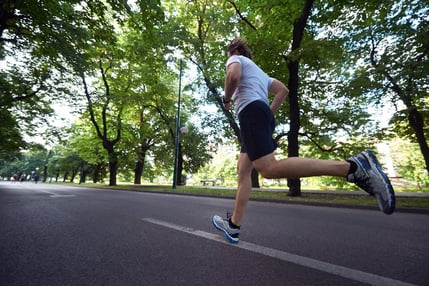In the peak of summer, scorching temperatures can put a damper on your outdoor activities and workouts, making you feel thirsty, tired, and unmotivated. Fight the dreaded summer fatigue with these tips from North Ridge Personal Trainer Drew Schultz to stay healthy and energized both inside and outside the gym.
Editor's Note: This post is authored by O2 Fitness North Ridge Personal Trainer Drew Schultz.
Does being thirsty mean we are dehydrated?
Thirst serves us well as a regulatory mechanism. Sometimes we may hear, “If you’re thirsty, it’s too late.” It doesn’t necessarily mean we are dehydrated, but the body is telling us its fluid levels have dropped somewhat, and it’s time to bring them back up to par.
Do you need electrolyte replacement drinks?
If you have a well-rounded diet, you will have all the electrolytes you need. For example, sodium chloride is common salt. Potassium, calcium, and magnesium are found in abundance in green vegetables, bananas, and citrus fruits. These electrolyte minerals are involved in muscle contraction, normal heart rhythm, and any life function in the body. When we sweat profusely during exercise, we drain ourselves of electrolytes. On hot summer days outside, it can be beneficial as a quick replenishment but a comprehensive diet rich in fruits and vegetables is an ideal preventative-maintenance solution.
Is there a specific amount of water to intake?
We have heard recommendations over the years, such as “eight 8 oz glasses of water per day.” This may be on the low end, particularly if someone has been exercising. Take your bodyweight in pounds but pretend the number is ounces; cut this number in half, and go from there up to the bodyweight number for a daily maximum amount. For example, if I weight 190 lbs, then 95 oz is my minimum intake; on particularly demanding days in the heat, 190 oz may be more appropriate.
What about stretching?
The type and timing of stretching will determine what the benefits are. Regardless of weather, dynamic stretching—stretching through movement/reps—is best done before the main workout. This will allow for greater extensibility and contraction, as well as safely prepare the joints. Static stretching, which can limit our strength or even cause a strain/slight tear if performed on a cold muscle, is best done after the workout when the body is the most limber. This is the ideal time to “lock in” longer-term flexibility gains.
Contact an O2 Fitness personal trainer to find out more about dynamic stretching and preparing your body for the ultimate productivity in your workouts.








Leave A Comment